
Embarking on a journey through one of the world’s busiest air hubs, like Delhi’s Indira Gandhi International Airport (IGI), demands a level of preparedness that can significantly impact your travel experience. As a vital gateway connecting India to the globe, IGI operates on a scale that can be overwhelming for the unprepared traveler. Understanding its intricate systems and extensive facilities is not just helpful; it’s essential for a smooth and timely passage through this bustling aviation giant. Every moment saved through informed choices contributes to a more relaxed start to your adventure.
Indira Gandhi International Airport, known by its IATA code DEL, is far more than just a transit point; it is the primary international airport serving New Delhi and the National Capital Region. With its sprawling 5,106 acres, it has consistently held the title of India’s busiest airport in terms of passenger traffic since 2009. Indeed, its capacity and sheer volume of operations place it among the elite globally, ranked as the ninth-busiest airport in the world and the second-busiest by seating capacity as of 2025. This remarkable scale means that every traveler should approach their visit with an understanding of its operational complexities.
This comprehensive guide aims to arm you with practical, actionable insights, drawing directly from the airport’s operational details, to help you avoid common pitfalls that can lead to unnecessary delays. We’ll delve into the specific aspects of IGI’s infrastructure and services that, if overlooked, could add stress and time to your journey. By being aware of these critical areas, you can transform potential headaches into smooth transitions, ensuring your focus remains on the excitement of your destination, not the anxieties of airport navigation.
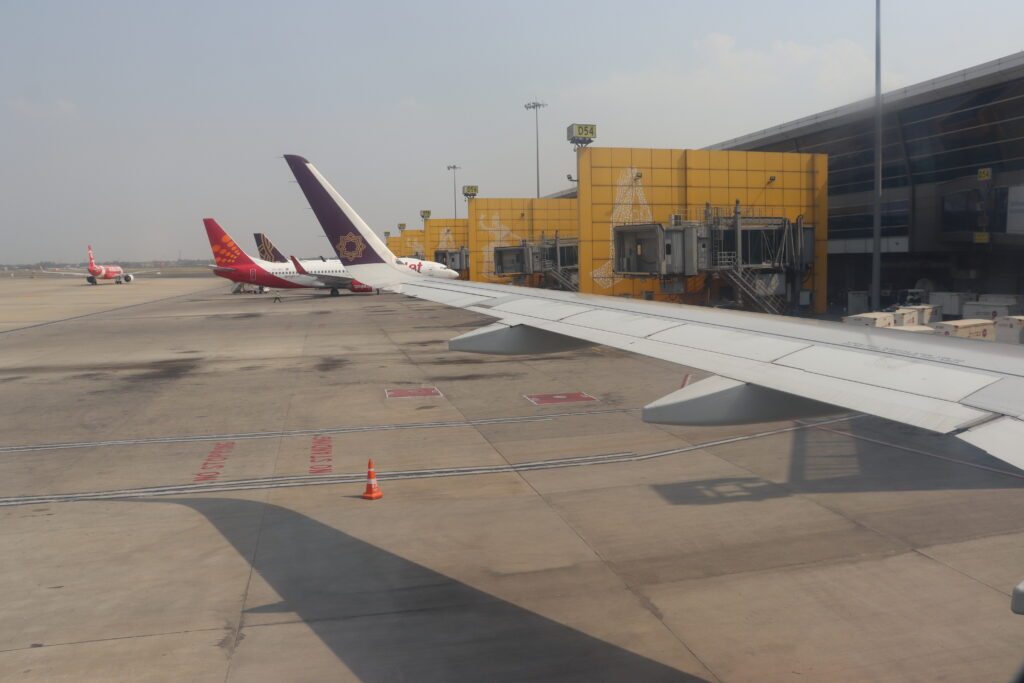
1. **Underestimating the Sheer Scale and Busiest Status of IGI Airport**
A fundamental mistake many travelers make is underestimating the sheer size and operational intensity of Indira Gandhi International Airport. This isn’t just a regional hub; it’s a global behemoth that processes tens of millions of passengers annually. According to the latest rankings issued by the UK-based air consultancy firm, OAG, as of 2025, it stands as the ninth-busiest airport in the world. Such a high ranking is a testament to its constant activity and extensive passenger flow, demanding respect for its operational demands.
In the financial year of 2024–25, the airport handled an astounding “over 7.92 crore (79.2 million) passengers,” which marked the highest figure ever recorded in its history. This immense volume of traffic means longer queues, more extensive facilities to navigate, and a general need for more time for every step of the airport process. Passengers who approach IGI as they would a smaller, less busy airport often find themselves caught off guard by the crowds and the sheer logistical scale.
Furthermore, beyond passenger numbers, IGI is also recognized as the busiest airport in the country in terms of cargo traffic, adding another layer of operational complexity. It is routinely one of the busiest airports globally, as confirmed by Airports Council International rankings. For travelers, this translates into a heightened need for punctuality and patience. Arriving with ample time is not merely a suggestion but a necessity to account for the distances within the airport, the processing times, and the unexpected variables that can arise in such a high-traffic environment.
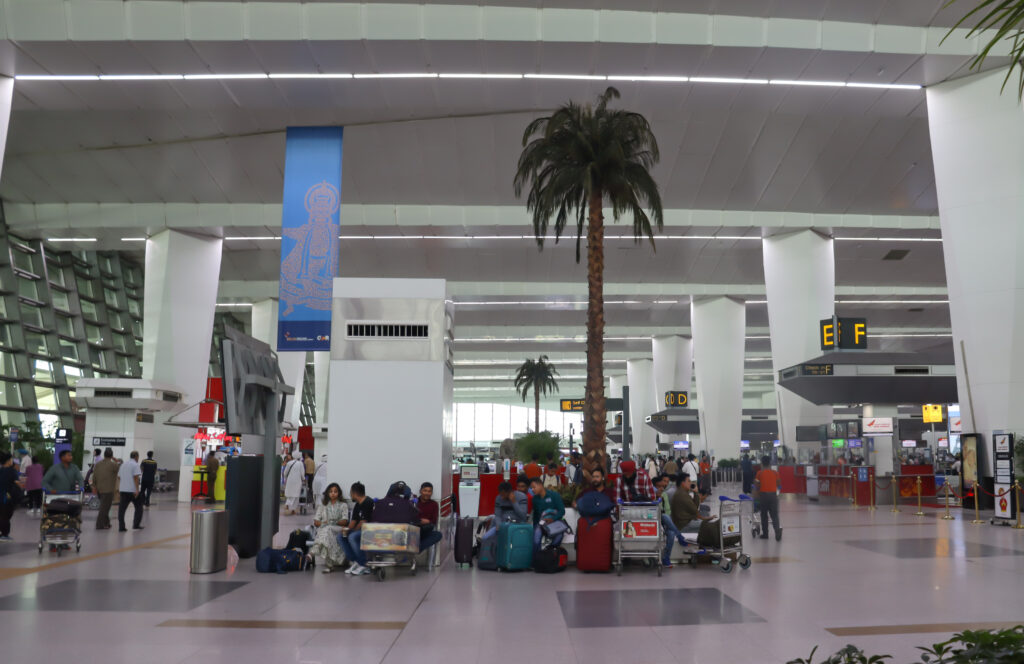
2. **Failing to Confirm Your Departure Terminal and Airline Allocations**
One of the most frequent causes of preventable delays at IGI Airport stems from travelers failing to verify which terminal their specific airline and flight will be operating from. The airport is served by approximately 80 airlines and currently operates three actively scheduled passenger terminals, each with specific functions and allocations. Arriving at the wrong terminal can lead to significant time loss, requiring transfers between facilities that may not be immediate.
Terminal 1, for instance, is primarily utilized by low-cost domestic carriers, including airlines such as SpiceJet and IndiGo. This terminal has undergone significant expansion, with Terminal 1D being fully expanded with an arrivals hall, aiming to boost its annual passenger handling capacity from 1.8 crore (18 million) to 4 crore (40 million). As of 2025, after major renovations, Terminal 1 has re-opened as a singular building, encompassing the areas of previous terminals 1A through D. This constant evolution means previous knowledge about terminal layouts might be outdated.
Conversely, Terminal 3 is an integrated terminal designed to handle both international and domestic flights. Indian carriers operating international flights, such as Air India, IndiGo, and SpiceJet, often depart from here. Domestically, Air India, Air India Express, and select flights of SpiceJet and IndiGo also use the domestic side of Terminal 3. It’s crucial to note that “all other airlines operate their flights from Terminal 3.” Meanwhile, Terminal 2, which previously handled international flights and later select domestic operations for GoAir and IndiGo, is “currently closed due to ongoing renovations” as of July 2025. Given these dynamic allocations, double-checking your flight details and assigned terminal before heading to the airport is an essential step to avoid frantic last-minute transfers.
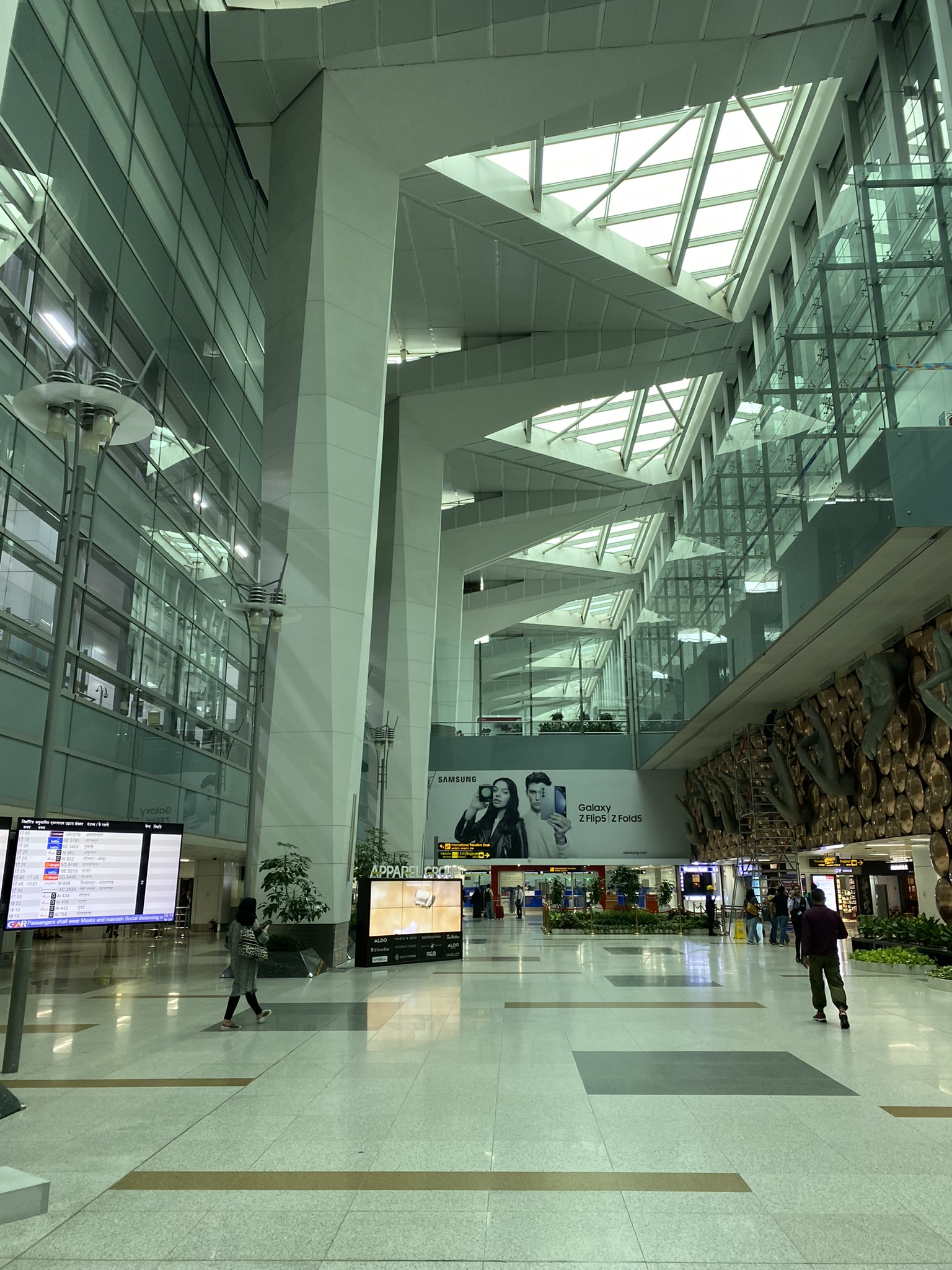
3. **Neglecting to Utilize the Contactless E-Boarding Facility**
In an effort to streamline passenger processing and reduce waiting times, DIAL, the airport’s management, introduced an innovative e-boarding facility across all three terminals in 2021. Neglecting to take advantage of this modern convenience can be a significant oversight for travelers aiming for efficiency, particularly as they approach security checks.
This system is designed for maximum convenience and speed. All boarding gates at the airport are equipped with “contactless e-boarding gates with boarding card scanners.” This technology empowers passengers to simply “flash their physical or e-boarding cards to verify flight details in order to proceed for security checks.” The process is intuitive and significantly faster than traditional manual checks, minimizing queues and bottlenecks at crucial junctures.
For the internet-savvy traveler familiar with digital solutions, embracing this facility is a no-brainer. It aligns perfectly with the goal of expediting your journey through the airport, moving you more swiftly from check-in to your departure gate. By having your boarding pass ready on your mobile device or as a printed copy that can be easily scanned, you actively contribute to a smoother flow, not just for yourself but for everyone around you, ensuring that security checks become less of a hurdle and more of a seamless step.
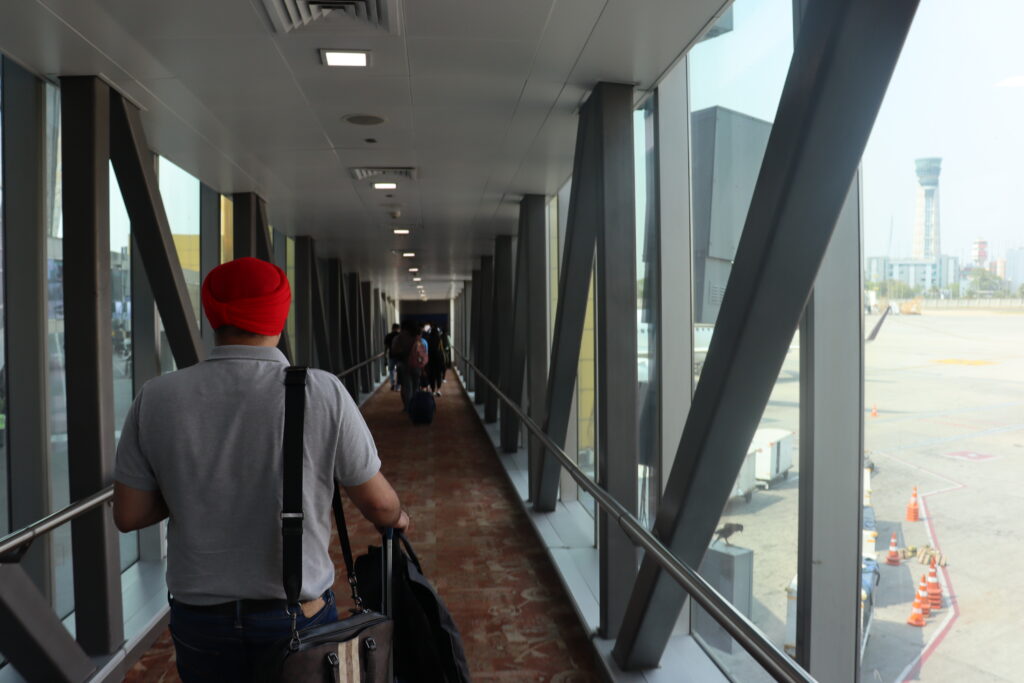
4. **Disregarding the Extensive Metro and Planned APM Connectivity**
Navigating the journey to and from Indira Gandhi International Airport using only road transport can be a common mistake, especially given Delhi’s traffic patterns. IGI boasts an impressive and continually expanding network of public transport options, specifically designed to offer efficient alternatives to road travel. Disregarding these connections can lead to unnecessary delays, stuck in city traffic rather than gliding swiftly to your terminal.
The Delhi Metro system provides direct access to the IGI complex through three dedicated stations. Terminal 1 is conveniently served by the Terminal 1-IGI Airport metro station on the Magenta Line. Meanwhile, Terminals 2 and 3, which are co-located, share the IGI Airport metro station on the Orange Line, also known as the Airport Express Line. This Orange Line is particularly useful, linking to the New Delhi metro station (connecting to the Yellow Line and New Delhi Railway Station) and the Dwarka Sector 21 metro station (connecting to the Blue Line).
Looking to the future, the airport’s commitment to seamless connectivity is further exemplified by the upcoming Automated People Mover (APM) system. DIAL issued tenders in September 2024 for this “elevated cum at-grade” system, slated for completion by the end of 2027. This 7.7 km line will feature four stops—T2/3, T1, Aerocity, and Cargo City—promising to revolutionize inter-terminal transit. By leveraging these existing and future metro and APM options, travelers can bypass the uncertainties of road traffic on the “older and busier 27.7 km long at-grade Delhi–Gurgaon Expressway NH 48” or the “newer 26.7 km long elevated Dwarka Expressway NH-248BB,” ensuring a more predictable arrival at their departure gate.
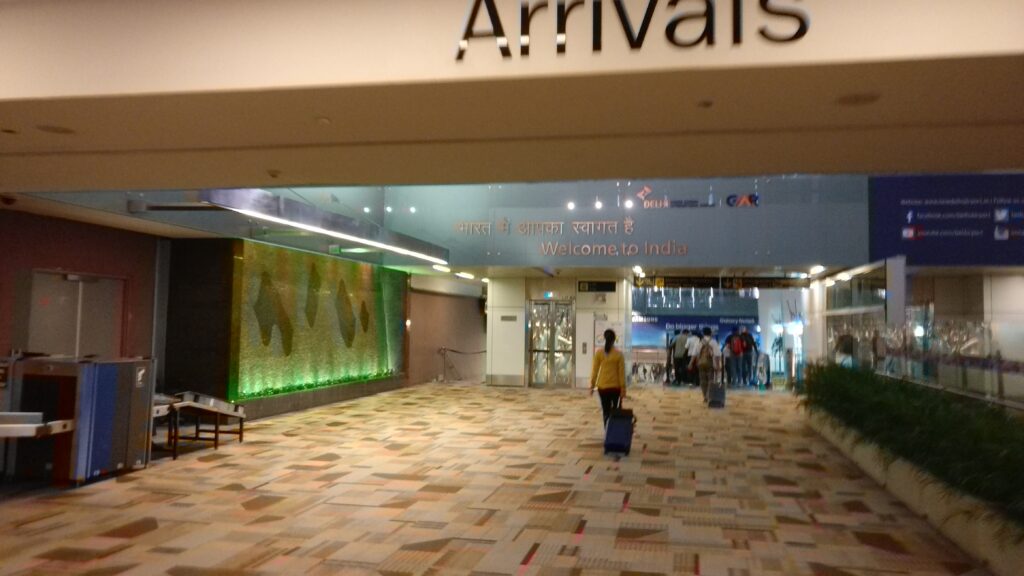
5. **Ignoring Potential Weather-Related Operational Delays, Especially Due to Fog**
While not a direct “security mistake,” a significant oversight for travelers departing from or arriving at IGI, especially during certain seasons, is neglecting the potential for weather-related operational delays, particularly those caused by fog. This lack of awareness can lead to heightened stress and missed connections if not factored into travel plans.
The historical context provides a clear warning: in the “winter of 2005, there were a record number of disruptions at Delhi Airport due to fog/smog.” While the airport has since invested heavily in advanced technology to mitigate such issues, understanding these capabilities and limitations is crucial. IGI is one of the few airports in India, along with Chaudhary Charan Singh International Airport in Lucknow and Jaipur Airport, to be equipped with the sophisticated CAT III-B ILS (Instrument Landing System) on its runways 11R/29L and 11L/29R. This technology allows for aircraft operations in extremely low visibility conditions.
Despite these advanced systems, severe fog can still impact flight schedules. Some domestic airlines have even “trained their pilots to operate under CAT-II conditions of a minimum 350 m (1,150 ft) visibility.” This demonstrates the airport’s proactive approach to minimizing disruptions. However, travelers should still check weather forecasts and airline advisories, especially during winter months, and consider building in extra buffer time. While the airport strives for predictability with systems like Airport Collaborative Decision Making (A-CDM), nature can still present challenges, making traveler awareness an important component of avoiding personal delays.
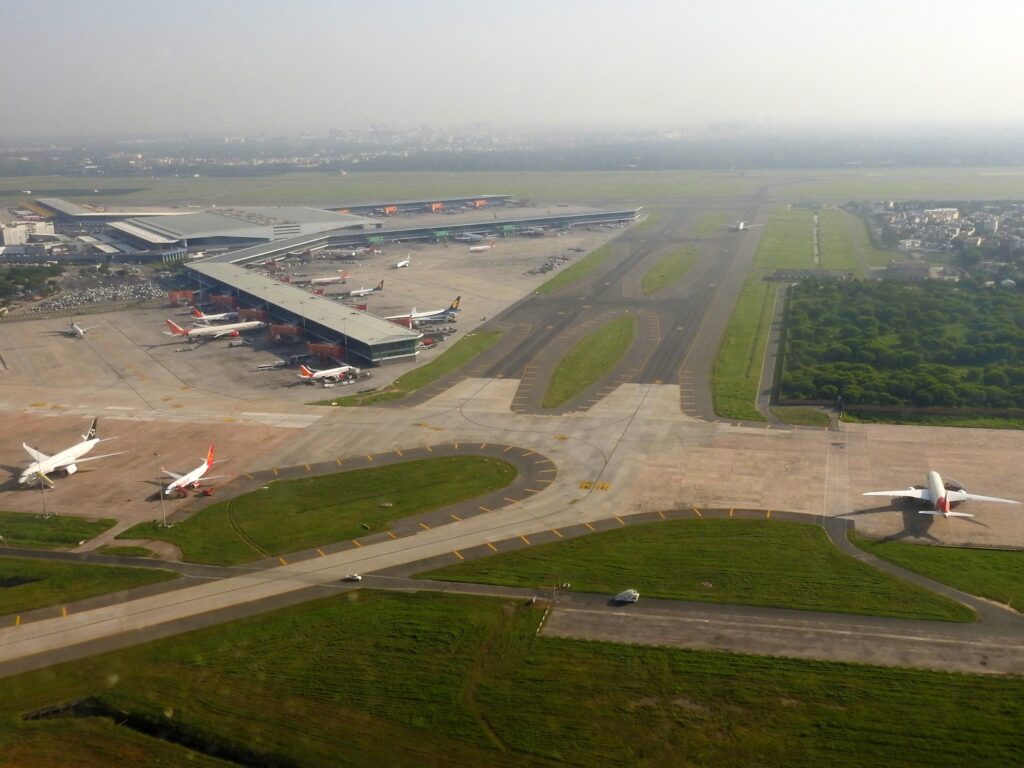
6. **Being Unaware of Ongoing Terminal Renovations and Expansions**
One of the most insidious errors a traveler can make at IGI Airport is relying on outdated information regarding its terminal structure. This dynamic hub is in a constant state of evolution, with significant renovations and expansions regularly reshaping its facilities. What was true about a terminal’s function or accessibility even a few months ago might no longer hold, making current knowledge paramount for a smooth journey through this bustling aviation giant.
Consider the remarkable transformation of Terminal 1, which historically comprised separate blocks like 1A, 1B, 1C, and 1D. As of 2025, following extensive major renovations and an ambitious expansion, Terminal 1 has proudly re-opened as a singular, integrated building. This development, encompassing the areas of previous terminals 1A through D, has dramatically boosted its annual passenger handling capacity from a previous 1.8 crore (18 million) to an impressive 4 crore (40 million). Travelers accustomed to the older, fragmented layout would find themselves navigating a completely new, larger, and more efficient space, which, if unanticipated, could easily lead to confusion and significant delays, especially during peak travel times.
Simultaneously, while Terminal 1 was being revitalized, other terminals have seen equally important shifts that impact traveler planning. Terminal 2, which once served international flights and later select domestic operations for carriers like GoAir and IndiGo, is explicitly stated to be “currently closed due to ongoing renovations” as of July 2025. This means that airlines that previously utilized T2 have been reallocated, often to Terminal 3. Travelers arriving at the airport with the expectation of using a now-closed terminal will face the inconvenience and considerable time drain of discovering their mistake and then having to relocate, underscoring the critical need for up-to-the-minute information.
These continuous enhancements are not just cosmetic; they are strategic changes designed to improve passenger flow, augment capacity, and solidify IGI’s status as the ninth-busiest airport globally. However, for the individual traveler, they present a persistent challenge: the absolute necessity to constantly verify terminal assignments for their specific flight. Ignorance of these significant structural changes can transform a planned, efficient transit into a frantic scramble to find the correct departure point, highlighting the paramount importance of checking official airport advisories or airline communications right before departure. This proactive step is a fundamental aspect of navigating a world-class, rapidly developing airport with confidence and ease.
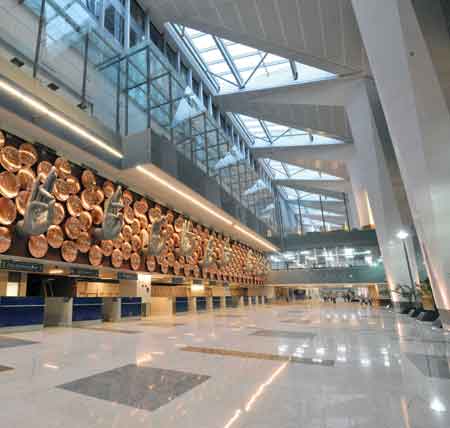
7. **Not Allocating Sufficient Buffer Time for Transit and Unexpected Variables**
Given IGI’s colossal scale and relentless operational pace, underestimating the time required for every single step of your airport journey is a critical and frequently made oversight. Handling “over 7.92 crore (79.2 million) passengers” in the financial year 2024–25, IGI is not merely busy; it is an immense and intricate ecosystem where unforeseen delays can cascade rapidly, demanding a generous buffer in your travel schedule. Attempting to rush through such a high-traffic environment is a sure-fire recipe for heightened stress, potential missed flights, and an overall unpleasant start to your adventure.
Consider the sheer physical distances and the inherent processing times involved within the airport itself. Terminal 3, for instance, is a monumental two-tier building spread over an area of 5.4 million square feet, making it the world’s 15th largest terminal. It is equipped with an impressive 168 check-in counters, 78 aerobridges at 48 contact stands, and 95 immigration counters. Navigating from the curbside arrival to your designated departure gate, especially during peak operational hours, involves traversing considerable lengths and patiently passing through multiple queues for check-in, security screening (which features 18 X-ray screening areas), and immigration. Even with efficient systems like the Airport Collaborative Decision Making (A-CDM) in place to optimize takeoffs and landings, the sheer volume of people ensures that every stage takes time.
Moreover, the journey to and from the airport itself demands an equally careful consideration of time. Despite IGI boasting an impressive and continually expanding network of public transport options, including direct metro access, road traffic in Delhi can be notoriously unpredictable. The “older and busier 27.7 km long at-grade Delhi–Gurgaon Expressway NH 48” or the “newer 26.7 km long elevated Dwarka Expressway NH-248BB” can both experience significant bottlenecks, especially during peak city commuting hours. Relying solely on optimistic estimated travel times without adequately accounting for potential traffic jams, particularly during rush hours, is a risk no prudent traveler should ever take, as it can quickly erode your buffer.
To safeguard against these myriad variables and ensure a stress-free experience, it’s absolutely imperative to build in a significant time cushion. Arriving at least three hours before domestic flights and a minimum of four hours for international departures at IGI is not an overestimation; it is a practical and highly recommended necessity. This additional time comfortably allows for unexpected delays at security checkpoints, longer-than-anticipated walks to distant gates, or any unforeseen administrative checks that might arise, ultimately transforming potential anxiety into a relaxed and controlled start to your journey. Prioritizing buffer time is a cornerstone of intelligent travel at IGI.

8. **Overlooking the Dedicated General Aviation Terminal**
For those traveling by chartered flights or private jets, a distinct and often overlooked mistake is failing to recognize the existence and specific purpose of IGI’s General Aviation Terminal. Unlike commercial passengers who are processed through the bustling Terminals 1 or 3, private fliers have the distinct advantage of a specialized facility designed to cater exclusively to their unique requirements. Mistaking the main commercial terminals for private aviation services will inevitably lead to unnecessary complications, significant delays, and a frustrating start to what should be a premium travel experience.
This General Aviation Terminal, a pioneering facility in India, was proudly commissioned in September 2020. Its creation marked a significant enhancement for the private air travel segment within the country. The terminal was specifically developed to “support the movement and processing of passengers flying through chartered flights or private jets from the airport.” This means it offers bespoke services, including dedicated and expedited check-in counters, streamlined security screening, and efficient immigration facilities, all meticulously tailored to the privacy, speed, and discretion expected by general aviation users.
The establishment of a separate General Aviation Terminal, distinct from the primary commercial operations, is a deliberate and well-considered design choice to streamline processes for both segments of air travel. Attempting to access private flights from a commercial terminal would not only be highly inefficient due to the vastness of the airport but also very likely impossible, given the entirely different operational protocols and stringent security clearances involved for private aircraft and their passengers. Therefore, travelers utilizing private aviation must ensure they are precisely directed to and subsequently arrive at the correct, dedicated general aviation facility.
Awareness of this specialized terminal is absolutely crucial for ensuring a seamless and premium experience for private travelers. It powerfully exemplifies IGI’s comprehensive and forward-thinking approach to catering to all segments of air travel, from the high-volume budget domestic passenger to the international private jet user demanding efficiency and exclusivity. For the discerning traveler in this particular category, understanding this specific operational detail ensures that their journey begins and ends with the expedited, personalized service it is intended to provide, thereby successfully avoiding any frustrating misdirection or unnecessary operational hurdles.
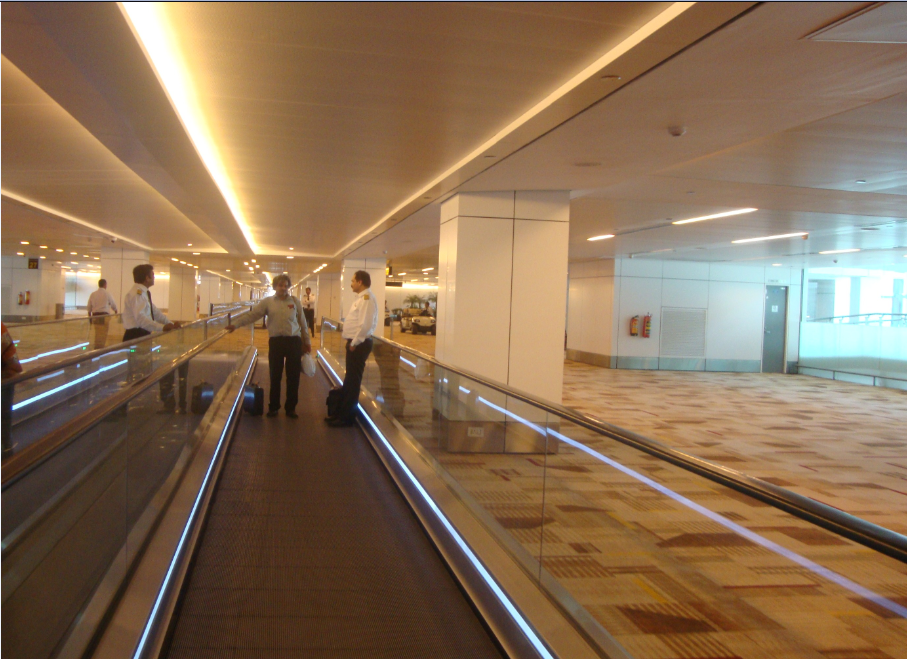
9. **Underestimating the Impact of Extensive Infrastructure Development**
Indira Gandhi International Airport is far from a static entity; it is a sprawling, living canvas of continuous infrastructure development, and underestimating its ongoing transformation can easily lead to traveler confusion and unexpected delays. From the strategic additions of new runways to the implementation of advanced taxiways and the planned integration of sophisticated inter-terminal transport systems, these monumental projects, while undeniably beneficial for long-term efficiency and capacity, often introduce temporary changes or require travelers to adapt to new routes, signage, and facilities. Ignorance of these significant developments can manifest as a crucial operational mistake, impacting the overall travel experience.
A prime example of IGI’s relentless modernization is the inauguration of its fourth 4,400 m (14,400 ft) runway and the cutting-edge 2.1 km (1.3 mi) Eastern Cross Taxiways (ECT) with dual parallel taxiways in July 2023. The ECT, described as an “elevated cum at-grade” system, is a revolutionary addition, meticulously designed to significantly “reduc[e] duration to reach the southern runways from 9–10 minutes to only two minutes.” While a massive improvement for aircraft ground movements, passengers might experience altered taxi routes or slightly different views as their plane navigates these new paths. Being aware of these modern additions not only helps appreciate the airport’s efficiency but also prepares travelers for a smoother journey from touchdown to terminal.
Looking further into the future, the airport’s unwavering commitment to seamless internal transit is powerfully evidenced by the tenders issued in September 2024 for an “elevated cum at-grade Automated People Mover (APM) system.” Slated for completion by the end of 2027, this ambitious 7.7 km (4.8 mi) line will feature four critical stops: T2/3, T1, Aerocity, and Cargo City. While this APM promises to revolutionize inter-terminal travel, dramatically reducing transfer times and enhancing convenience, its construction phases will inevitably involve temporary detours, altered pedestrian pathways, or require travelers to familiarize themselves with new signage and access points to the system. Proactive information gathering about such upcoming projects is absolutely key to hassle-free navigation.
Beyond the immediate airport complex, IGI’s external connectivity is also undergoing massive upgrades, enhancing access but demanding traveler awareness. The Bijwasan railway station, strategically located immediately to the west of IGI, is being transformed into a major world-class regional multimodal transport hub, with its construction for a ₹270.83 crore (approx. $32 million USD) project scheduled for completion in December 2024. Additionally, two new Inter-State Bus Terminals (ISBTs) are under construction at Aerocity and Dwarka. These extensive developments offer excellent long-term travel options and reduce reliance on personal vehicles, but they also mean that traditional routes to and from the airport might not always be the most efficient or convenient, demanding flexibility, an open mind, and crucially, up-to-date awareness from all travelers.
Read more about: Tesla Ownership: Avoiding Costly Pitfalls That Could Drain Your Wallet and Your Patience
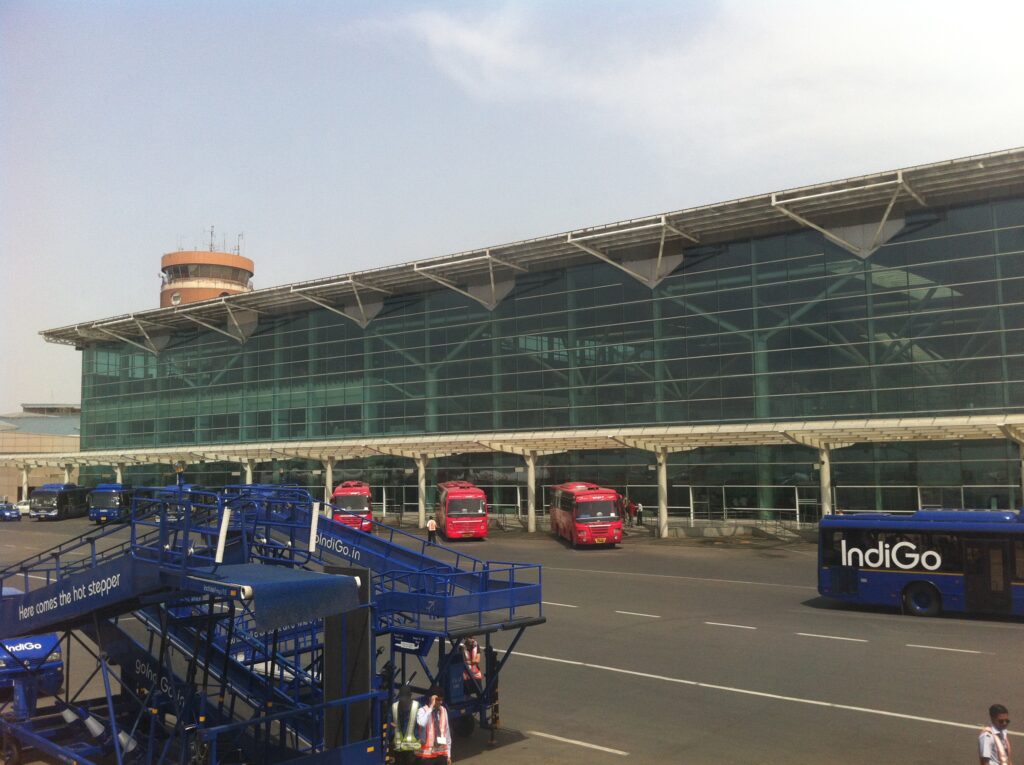
10. **Failing to Stay Informed About Temporary Airline Reallocations and Operational Shifts**
One of the most dynamic and potentially confusing aspects of operating within a mega-airport like Indira Gandhi International Airport is the fluid nature of airline terminal assignments, and a common mistake is simply assuming these allocations are fixed. While Terminal 3 serves as the predominant hub for “all other airlines” beyond the low-cost domestic carriers typically found at T1, the reality is that operational necessities, particularly during periods of extensive renovation and expansion, frequently lead to temporary reallocations and operational shifts that directly impact travelers’ plans and itineraries.
The factual context provided offers clear and specific illustrations of this phenomenon, emphasizing why vigilance is paramount. For instance, during the significant expansion work of Terminal 1, it was noted that “GoAir and select flights of IndiGo were moved to Terminal 2.” Simultaneously, “select flights of SpiceJet and IndiGo [were moved] to Terminal 3.” Furthermore, to accommodate the scale of expansion, it is stated that “Some flights of SpiceJet and IndiGo were also shifted to Terminal 3 temporarily for the expansion of Terminal 1.” These are not minor, isolated adjustments; they represent significant operational changes that can affect thousands of passengers daily.
With the added detail that Terminal 2 is “currently closed due to ongoing renovations” as of July 2025, it logically follows that the airlines that were temporarily shifted there would have once again been reallocated, likely to Terminal 3. This continuous, almost systemic movement and reallocation underscore the crucial need for travelers to actively verify their departure terminal for every single flight. Relying on past experiences, general assumptions, or even outdated information from booking confirmations can easily lead to the frustration of arriving at the wrong terminal, necessitating a potentially time-consuming and intensely stressful transfer across the vast and busy airport complex.
To successfully avoid this all-too-common pitfall, the most practical, authoritative, and actionable advice is profoundly simple yet effective: always, without exception, confirm your flight’s terminal directly with your airline or through official IGI Airport channels within 24-48 hours of your scheduled departure. This proactive and diligent step ensures you possess the most current and accurate information, effectively bypassing the confusion and potential delays that temporary reallocations can cause. In a complex, ever-evolving, and high-traffic environment like IGI, staying informed is not merely helpful—it’s absolutely essential for securing a smooth, predictable, and ultimately on-time travel experience. It’s your responsibility to be armed with the latest details.
**Conclusion:**
Navigating Indira Gandhi International Airport, with its immense scale, global significance, and continuous evolution, truly demands more than just a ticket and a passport; it fundamentally requires informed preparedness. By internalizing the dynamic nature of its terminals, embracing technological aids like e-boarding, strategically leveraging its vast and expanding public transport network, and most importantly, allocating generous buffer time for every stage of your journey, you empower yourself to bypass the common pitfalls that often ensnare less-informed travelers. IGI is a marvel of modern aviation, meticulously designed for efficiency and high-volume operations, but its inherent complexities necessitate an active, aware, and proactive approach from every single passenger. Armed with these practical and authoritative insights, your journey through one of the world’s busiest airports won’t be a test of patience, but rather a testament to smart, stress-free travel, allowing you to focus squarely on the excitement and adventure that awaits you beyond the gates. Make preparedness your ultimate travel companion.



